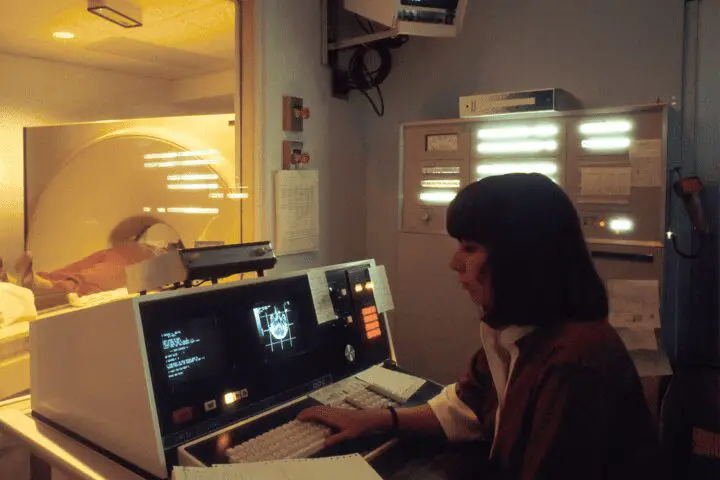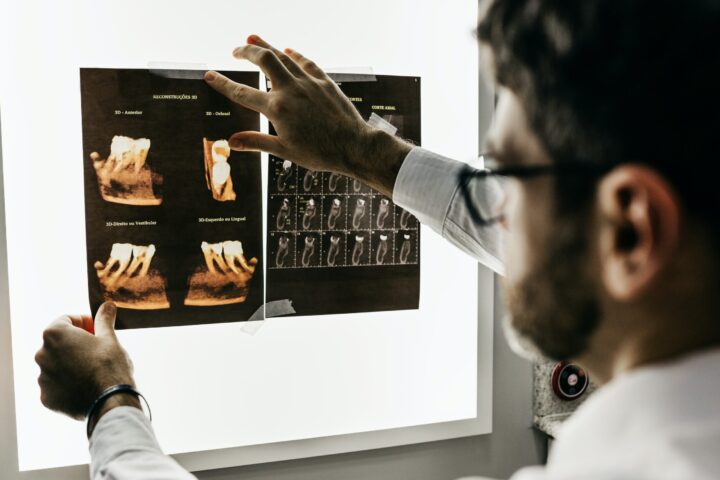Dermatopathology is the study of skin diseases, and most diseases are normally diagnosed by a microscopic examination of skin biopsies. One great concern in dermatopathology is skin cancer, which may be either melanoma or varieties of other forms. The earlier the diagnosis, the greater the promise for treatment and outcomes, as recorded by scholars. Wherever AI was, it certainly started to occupy first place in diagnosis, promising efficiency and precision for several skin cancers.
The following topic discusses how AI is creating transformation in dermatopathology—more precisely, in skin cancer diagnoses. Further discussion will be focused on current applications and advantages, showing what can be foreseen as potential in the near future.
What is dermatopathology?
Dermatopathology is the fusion of dermatology and pathology. Skin specimens are considered using a microscope. Dermatopathologists interpret the biopsies to identify pathologies, recognize the type of disease, and indicate treatments.
Key areas in dermatopathology include:
Skin Cancer Diagnosis: It diagnoses all types of skin cancers, such as melanoma, basal cell carcinoma, and squamous cell carcinoma. Inflammatory skin disorders: Diseases like psoriasis and eczema are diagnosed. Genetic Skin Diseases: Diagnoses genetic disorders of the skin. How Are AI Revolutionising dermatology?
More specifically, it is machine learning and deep learning that play a significant role in the diagnostics of skin cancer. A peek into the way AI goes into implementation in dermatopathology:


1. Computerised Image Analysis
These may even go to the extent of sorting out high-resolution images of skin biopsies in search of a problem.
- Pattern Recognition: The AI algorithms identify the pattern of skin tissue that could be carcinogenic. Most of these are trained to pick up features that show atypical shapes of cells or abnormalities in pigment on account of malignancy.
- Segmentation: AI in segmentation outlines the images to show the region of interest, say a possible cancerous lesion. It limits or narrows the pathologist’s attention to certain areas that have to be examined in detail.
- Quantitative Analysis: AI gives the size and shape of the lesions, cellular density, and other useful information in judging the severity of the condition.
2. Improvement of Diagnostic Accuracy
AI navigates the dermatopathologist in making the diagnosis more accurate, with more detail, and reduces those made by human input. The algorithms of AI. will have consistency in each analyzed image since they would use the same set criteria, hence reducing variability from one pathologist to another. Reduction of errors: AI systems reduce instances of errors while noting issues a human might easily miss. They give attention to something that a person might pass by.
Early Detection: This is so because even the minute changes in skin tissues are revealed as early carcinomas with the advent of AI. Consequences are early interference and good treatment.
3. Improve Efficiency
Due to efficiency brought forth by the use of AI tools, this speeds up diagnosis in the process.
- Speed: The AI systems study a huge volume of images in the shortest time. Since the pathologists are able to study more cases within a short period of time, this speeds up the diagnostic process.
- Integration into Workflow: AI fits into the workflow currently going on in laboratories and automates all routine tasks, freeing the pathologist’s time to deal with more complex cases.
- Data Management: AI systems will filter and sort massive volumes of data. These range from, but are not limited to, patient records to results of imaging. This ensures that whatever information is needed is immediately available.
4. Pathologist Assistants
The work of the dermatopathologists is expected to be assisted in diagnosis by the provision of adequate help in the execution of tasks by the AI.
- Decision Support: Most of the diagnosis would involve the use of some AI decision support system whereby, through some image-based analysis, it comes up with possibilities for diagnosis that would guide the pathologists to some decisions and considerations for differential diagnosis.
- Training and Education: AI systems are utilized in training and educating young pathologists through interactive learning methodologies. These systems help the fresh trainees identify diagnosis criteria and build their skills.
- Collaboration: AI provides a venue where pathologists share observations and interpretations; it is in this pooling of knowledge that accuracy in diagnosis and treatment planning can be derived.
5. Advancing Research
The research on AI in dermatopathology focuses on large datasets for new insights.
- Data Mining: Information is mined from clinical studies and patient records, hence giving AI the ability to trace trends and correlations. This goes a long way in understanding disease progressions and thus developing new treatments.
- Predictive Models: AI applies data in doing predictive models, which forecast outcomes of diseases. This helps in personalized treatment with the development of a response against therapies.
- Clinical Trials: In clinical trials, AI selects suitable candidates and performs trial data analysis simultaneously. The entire process is accelerated with new ways coming up for diagnosis and therapy.


Case Studies: AI in Dermatopathology
Now, let me talk about a few cases in which AI brought a revolution to dermatopathology.
1. AI in Melanoma Detection
With time, systems like PathAI have developed a gamut of machine learning algorithms that perform skin biopsy image analyses for melanomas. A few of them reported huge successes in identifying malignant lesions, sometimes even outperforming those performed by very skilled dermatopathologists.
2. AI in Basal Cell Carcinoma
DeepMind has elaborated on deep learning algorithms in picture analysis for basal cell carcinoma. These AI algorithms perfectly show discrimination between cancerous and benign soft tissues, thus aiding diagnosis and treatment planning in this very frequent skin cancer.
3. Skin Lesion Classification using AI
The proposed application of Dermatologist.ai embodies a number of key advantages in classifying skin lesions with the aid of artificial intelligence. The AI goes into exhaustive detail in such high-resolution images and greatly benefits the dermatopathologist by enhancing quick skin abnormalities with respective remedying suggestions.


Future Prospects of AI in Dermatopathology
With courtesy to advances in artificial intelligence, so far, more revolutionary changes await this subject relating to dermatology, to mention the most imperative:
- Genomic Integration: AI can integrate genomics into diagnostic interpretations to enable big-picture views or even formulate treatments targeted toward a patient’s specific genetics.
- Imaging Technologies: A variety of AI-based technologies for imaging promise better resolution and enhancement in other features of images taken for skin biopsy, adding to the sensitivity and details of small changes.
- Global Access: AI-assisted dermatopathology services will also be made available in resource-constrained settings. Teledermatology and diagnostic support provided from any place around the globe could give a clue to equitable care of quality standards.
In conclusion, AI makes dermatopathology more accurate, quick, and efficient in diagnosing skin cancer. Also, generally speaking, AI raises the stakes as far as dealing with skin diseases is concerned.
This would mean that with continuous development in technology, the role of AI in dermatopathology will make a quantum leap forward in the near future regarding early diagnosis, tailored treatment, and access to healthcare services. Innovation ongoing in dermatopathology promises much more accuracy and a patient-centered approach in the future.



































Thank you for another excellent post. The place else could anybody get that kind of information in such a perfect method of writing? I’ve a presentation next week, and I am at the look for such info.